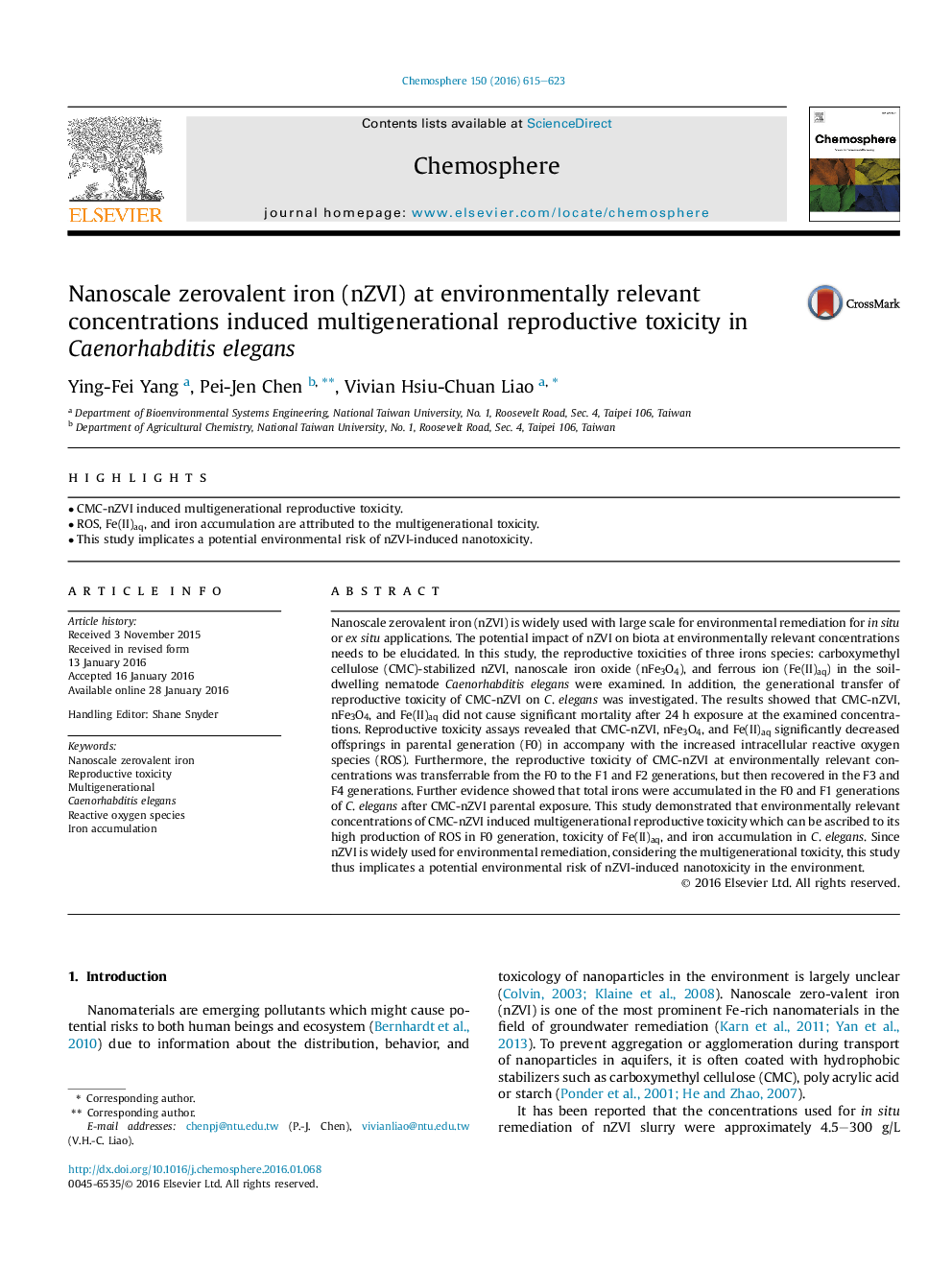| کد مقاله | کد نشریه | سال انتشار | مقاله انگلیسی | نسخه تمام متن |
|---|---|---|---|---|
| 6306854 | 1618821 | 2016 | 9 صفحه PDF | دانلود رایگان |
عنوان انگلیسی مقاله ISI
Nanoscale zerovalent iron (nZVI) at environmentally relevant concentrations induced multigenerational reproductive toxicity in Caenorhabditis elegans
دانلود مقاله + سفارش ترجمه
دانلود مقاله ISI انگلیسی
رایگان برای ایرانیان
کلمات کلیدی
موضوعات مرتبط
علوم زیستی و بیوفناوری
علوم محیط زیست
شیمی زیست محیطی
پیش نمایش صفحه اول مقاله

چکیده انگلیسی
Nanoscale zerovalent iron (nZVI) is widely used with large scale for environmental remediation for in situ or ex situ applications. The potential impact of nZVI on biota at environmentally relevant concentrations needs to be elucidated. In this study, the reproductive toxicities of three irons species: carboxymethyl cellulose (CMC)-stabilized nZVI, nanoscale iron oxide (nFe3O4), and ferrous ion (Fe(II)aq) in the soil-dwelling nematode Caenorhabditis elegans were examined. In addition, the generational transfer of reproductive toxicity of CMC-nZVI on C. elegans was investigated. The results showed that CMC-nZVI, nFe3O4, and Fe(II)aq did not cause significant mortality after 24Â h exposure at the examined concentrations. Reproductive toxicity assays revealed that CMC-nZVI, nFe3O4, and Fe(II)aq significantly decreased offsprings in parental generation (F0) in accompany with the increased intracellular reactive oxygen species (ROS). Furthermore, the reproductive toxicity of CMC-nZVI at environmentally relevant concentrations was transferrable from the F0 to the F1 and F2 generations, but then recovered in the F3 and F4 generations. Further evidence showed that total irons were accumulated in the F0 and F1 generations of C. elegans after CMC-nZVI parental exposure. This study demonstrated that environmentally relevant concentrations of CMC-nZVI induced multigenerational reproductive toxicity which can be ascribed to its high production of ROS in F0 generation, toxicity of Fe(II)aq, and iron accumulation in C. elegans. Since nZVI is widely used for environmental remediation, considering the multigenerational toxicity, this study thus implicates a potential environmental risk of nZVI-induced nanotoxicity in the environment.
ناشر
Database: Elsevier - ScienceDirect (ساینس دایرکت)
Journal: Chemosphere - Volume 150, May 2016, Pages 615-623
Journal: Chemosphere - Volume 150, May 2016, Pages 615-623
نویسندگان
Ying-Fei Yang, Pei-Jen Chen, Vivian Hsiu-Chuan Liao,